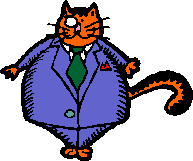|
Frequently Asked Questions: Cosmetic Surgery / Fat Reduction
|
|||
|
v
Abdominoplasty is an aesthetic
(cosmetic) surgical procedure designed to remove excess skin and fat
from the lower abdomen and to tighten the abdominal muscles. One may
wish to have an abdominoplasty if the abdomen is affected by obesity,
skin laxity following pregnancy or weight loss, or scars from previous
surgery. Reducing and recontouring abdominal skin and fat improve the
overall body appearance. It is neither a substitute for weight reduction
nor a cure for obesity. v
The procedure is usually
performed under general anaesthetia. Excess skin and fat is removed from
the lower abdomen and the abdominal muscles tightened. In some patients
the navel is repositioned. In most circumstances the scars can be hidden
inside the bikini line where they may be easy to conceal. However
scarring is an individual characteristic and can vary from patient to
patient. v
Following abdominoplasty, there
is often a feeling of tightness in the lower abdomen and there is
usually an area of diminished sensation that persists for several
months. A collection of fluid may form under the skin and require
aspiration. Infection is rare and is treated promptly with antibiotics
should it occur. v
The best results are obtained in
patients of near normal weight with some laxity of the abdominal skin or
a slight excess of fat or bulging of the abdominal muscles. The result
is usually permanent although of course excessive weight changes or
future pregnancies may undo some of the benefits of the surgery. v
Most people return to work within
two to four weeks, and to more vigorous exercise after six weeks. Liposuction (Lipectomy) v
Suction assisted lipectomy is an
aesthetic (cosmetic) surgical procedure designed to remove localized
collections of fat, such as occur on the thighs, buttocks and abdomen,
as well as the arms, neck and under the chin. Surgical lipectomy, which
involves removal of excess skin, as well as fat, may be advised instead,
or in addition to suction lipectomy. v
Suction lipectomy may be used to
improve your overall body appearance by reducing and recon touring
localized collections of fat. Suction lipectomy is ideal for patients
who have bulges that persist after diet and exercise. It is not a
substitute for weight loss. Usually the overlying skin will contract
following suction lipectomy, however in some circumstances a procedure
designed to remove excess skin may also be required. v
One must remember that this is
neither a substitute for weight reduction nor a cure for obesity. v
Either local or general
anaesthesia may be advised, depending on the extent of the procedure. A
cannula attached to a high-powered suction pump is inserted through a
small incision and the bulging fat removed. A pressure garment is
usually worn for 2-3 months post-operatively in order to decrease
bruising and swelling and to encourage the skin to contract to the new
shape. Because of their small size (usually about 1 cm) scars are not
usually significant after liposuction. v
Bruising and swelling are common
- the bruising usually subsiding in 3 weeks and the swelling in 8 weeks.
Other complications such as infection and prominent scars are unusual.
Slight irregularities such as grooving under the skin may occur and this
may be accompanied by looseness of the skin-although the skin does
usually contract over a period of time. v
Most activities may be resumed
within a few weeks. Many return to work after one week, and some even
sooner.
|
||


 Tummy Tuck
(Abdominoplasty)
Tummy Tuck
(Abdominoplasty)